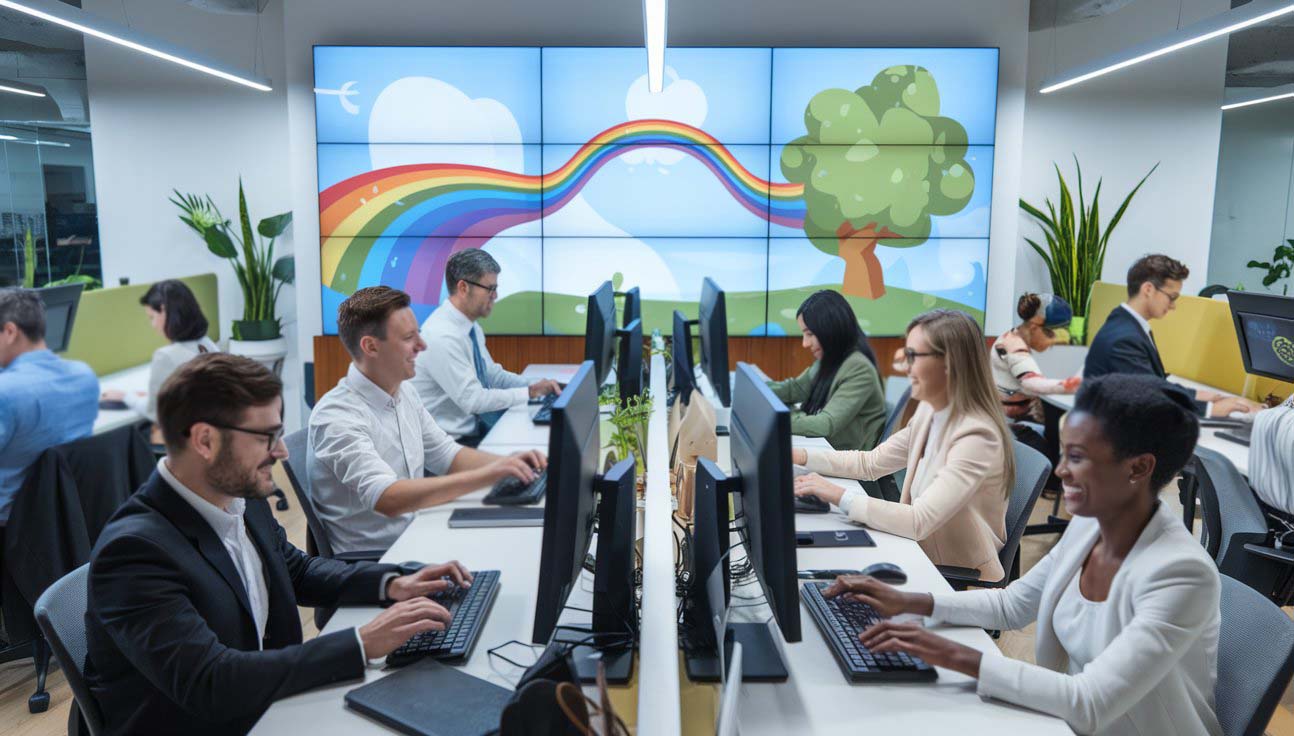Boosting Creative Thinking Through Fun Typing Challenges
Creators and professionals today are always on the lookout for ways to keep their creativity alive. Whether you’re a writer, student, or content strategist, the ability to think quickly and express ideas clearly is essential. One underrated but effective method? A simple, enjoyable typing challenge.
People often assume that fast and accurate typing is only for secretaries or customer service roles. But studies across different countries suggest that typing exercises can spark fresh ideas. When writing becomes a game, your mind stays alert—and creative breakthroughs often follow. Taking a quick online typing test is one way to experience how even small challenges can keep your thinking sharp and ideas flowing.
How Typing Exercises Support Creative Thinking
Young learners and professionals alike often look for ways to keep their imagination fresh. This isn’t just about writing faster—it’s about learning how to choose the right words and build flow with clarity. When you train your brain to think and write quickly, new ideas emerge with ease.
This method has already gained popularity in places like the United States and the Philippines. Some make it part of their daily routine to keep their minds sharp. The key is to blend structure with enjoyment. If typing feels like just another task, burnout can follow. But if there’s a hint of playfulness in the process, imagination grows naturally.
Some researchers even point to the link between finger movement and brain activity. As your fingers move across the keyboard, different areas of the brain light up. When you add small goals like a time limit, your focus sharpens. This approach also helps reduce self-doubt and encourages stronger confidence in expressing yourself.
Why Typing Can Be More Than Just Speed
Typing is often seen as a tool to finish work faster. But it has more to offer. When you set a goal—like typing a set number of words within a short time—you become more alert. The process becomes energizing because there’s direction and purpose.
Another benefit is attention to detail. For example, if you aim to write 300 words in five minutes, your brain kicks into high gear to find the best words quickly. It’s not just about technical skill; it’s also about unlocking authentic creative energy.
Take “freewriting” as an example. Choose a topic and write continuously without editing. The goal is to let ideas flow without interruption. You might be surprised at what comes out—some ideas are unusual, bold, or deeply personal. In many parts of the world, online groups offer daily themes like nature or music to help writers practice spontaneous expression.
Sample Micro-Challenge to Try
Try this: Sit down for ten minutes and write about something like “Thoughts After a Joyful Day.” Just type whatever comes to mind without worrying about grammar or structure. Focus on letting your thoughts come out freely.
Over time, you may notice your thinking becomes broader and more flexible. You can also invite friends to join and compare outputs. This type of creative play is helpful for students, professionals, or anyone who wants to process ideas. You can always clean up the draft later if you’d like to turn it into a full article.
Global Practices that Spark Imagination
In South Korea, some students take part in group typing challenges to improve their storytelling skills. In Germany, people follow daily themes and write down the first five ideas that come to mind. It feels like a game, yet it also builds skill.
In Africa, short typing activities are part of literacy and tech training. It helps young people become familiar with digital tools while stimulating their creativity. In Latin America, there are weekly prompts—such as local food traditions—where participants write fast and freely. The result is not only a fun challenge but also cultural learning and connection.
How Different Fields Benefit
This isn’t just for writers or students. Designers, marketers, and online content creators need quick, creative thinking too. Regular typing sessions help them brainstorm fresh concepts more efficiently.
Students benefit when creating rough drafts for essays or presentations. They spend less time hesitating because they’ve already built a habit of getting initial ideas down quickly. Researchers can also use this approach, especially when working under rigid outlines. Typing freely helps ideas flow even in academic settings.
Helpful Strategies to Get Started
- Set a Time Limit – Start with five to ten minutes daily. Write whatever comes to mind without stopping.
- Pick an Interesting Topic – Choose favorite movies, places, or personal memories.
- Swap Outputs with Others – Share what you’ve written with friends or coworkers for honest feedback.
- Track Your Growth – Save your writing and review it after a few weeks to notice progress.
Blending Structure with Enjoyment
Some believe discipline is key to mastery. That’s true, but the joy in the process shouldn’t disappear. When both are present, your creative base becomes stronger. Typing at the same time each day builds rhythm, and it gets easier to come up with strong ideas.
Enjoyment fuels momentum. When writing becomes something you look forward to, it’s easier to stay consistent. Many successful creatives highlight the importance of free, playful writing alongside goal-driven work. With just a few minutes a day, fresh ideas begin to surface more often.
The Value of Sharing and Feedback
Sharing your work opens doors to feedback. Others may see patterns or spark ideas you hadn’t noticed. In many countries, this is done through public forums or writing groups where participants exchange thoughts and notes.
If you prefer to keep things private at first, that’s perfectly fine. But once you’re comfortable, sharing can help you grow faster. In online communities, you’ll find fellow writers from around the globe. Learning from different styles and viewpoints expands your own creative range.
Finding Personal Meaning Through Practice
Typing challenges aren’t only about speed or skill. They often become a window to your emotions and ideas. As thoughts pour onto the screen, hidden feelings surface. This can help you understand your goals and inner thoughts more clearly.
Writing is often compared to a gentle form of emotional release. While not formal therapy, it can ease mental clutter. Re-reading your work might reveal patterns or insights that guide you through real-life situations.
Using Technology as a Creative Tool
There are many websites and apps that support fun typing practice. Features like word counters and timers help make each session feel organized. Some platforms even add sound effects when you reach your goal, making it feel more rewarding.
Online groups offer weekly topics and sometimes even small competitions. These communities connect people from various cultures, making creativity a shared experience. Technology becomes the bridge that allows anyone, anywhere, to join in.
Caring for Your Mental Energy
Although the practice is lighthearted, it’s important to rest when needed. If you’re too tired or mentally drained, don’t force yourself. Choose a time that works for you and skip a day if necessary. The purpose is to feel refreshed—not overwhelmed.
Think of it as a break from daily distractions. Instead of scrolling through social media, spend a few minutes typing out thoughts. If you’re tired, take a real rest. This way, you keep both your mind and body in good shape.
Making Typing a Daily Habit
You can fit this challenge into your schedule, even on busy days. Five minutes is enough. When you want to stretch further, go for ten or more. What matters most is consistency. Your mind gets used to thinking creatively when this becomes part of your everyday life.
Parents can try it when the kids are napping. Freelancers can do it during breaks. No matter your lifestyle, there’s room for a small writing session that energizes your mind. The trick is to find the setup that works for your routine.
Group Motivation and Creative Bonding
Typing becomes more enjoyable with support. Invite friends or teammates to join the challenge. Agree on a time to write and give each other comments. This creates positive pressure and a healthy sense of competition.
In some countries, workshops and webinars host live group sessions. People write at the same time, even if they’re thousands of miles apart. Afterward, they share feedback and learn from each other’s style. These collaborations help broaden your learning circle.
Progress Without Pressure
Some days, ideas just won’t come. That’s part of the process. When your mind needs a break, take it. A fun typing challenge should never feel like a burden. It’s meant to ease the thinking process when original ideas are needed most.
If you skip a day or two, don’t worry. You can always come back. What matters is knowing the challenge is there when you’re ready. Growth shows not only in output but in your growing comfort with new and creative ideas.
A Worldwide Boost in Creative Play
Thanks to global connection and digital tools, more people are enjoying these creative sessions. Some international contests now bring together different languages and perspectives. This exchange creates a deeper understanding of how others think and express themselves.
You can do this in English, Tagalog, or any language you’re comfortable with. Every voice adds something new. That’s why more people are giving it a try—because everyone has a story to tell, and sometimes, all it takes is a keyboard and a few good minutes.











Leave a Reply